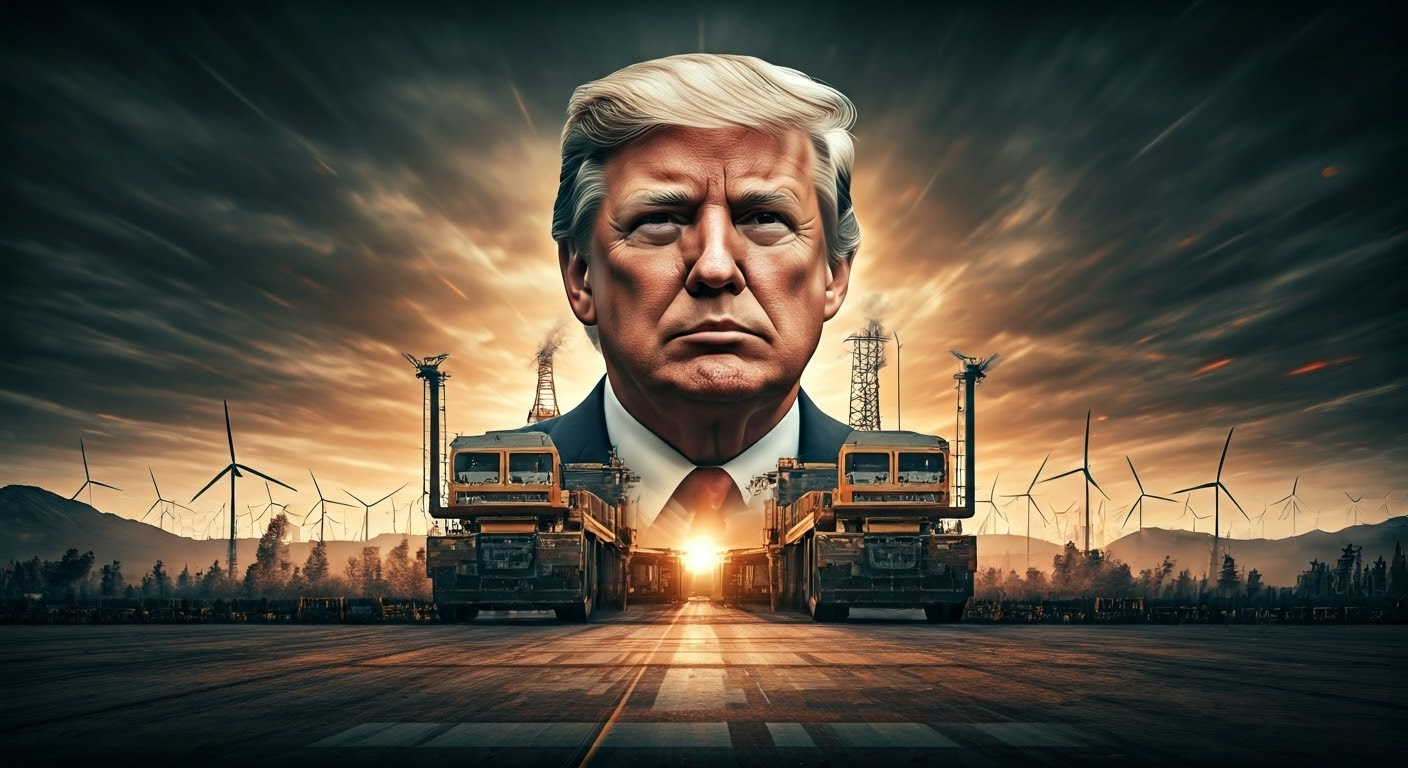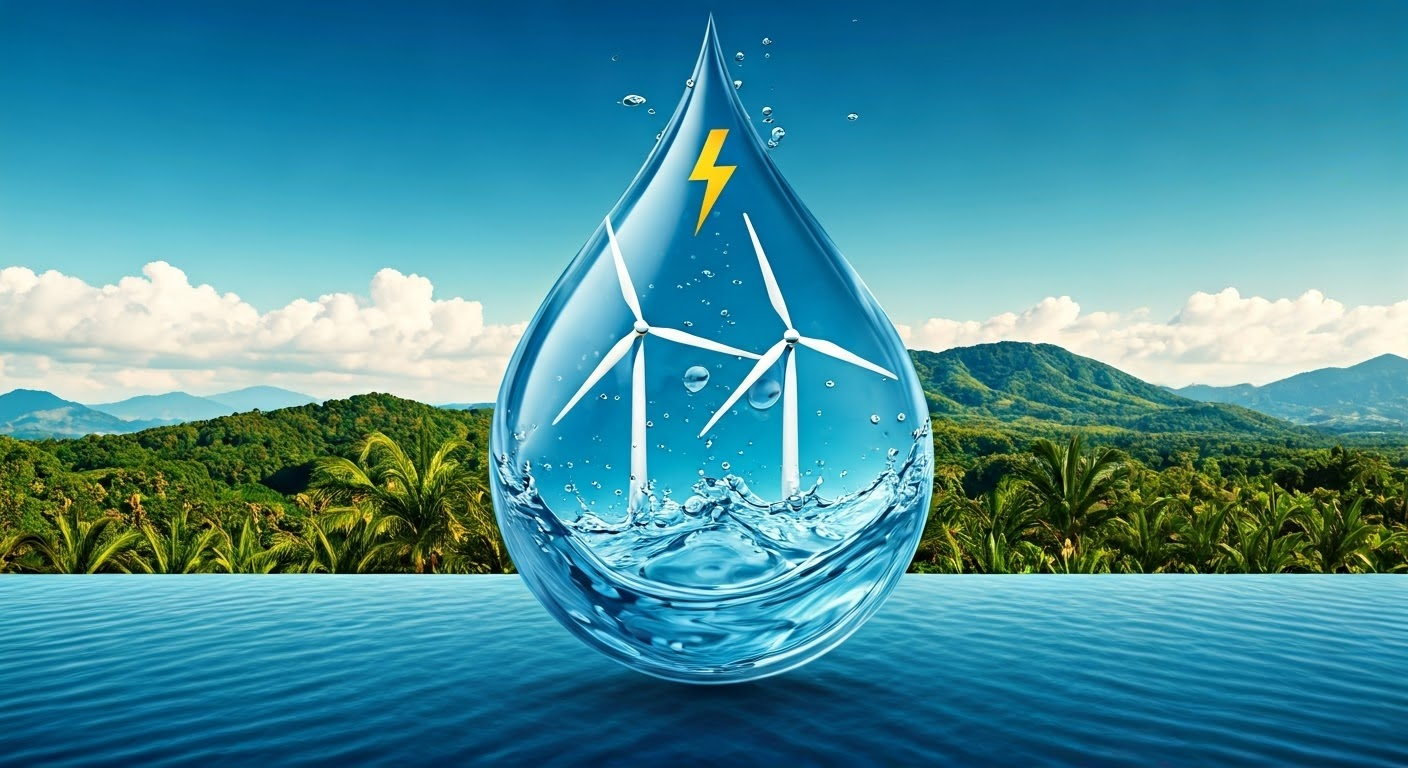Key Highlights
- Former President Donald Trump declared an « energy emergency » in response to what he claimed was an inadequate U.S. energy supply, citing threats to the economy, national security, and foreign policy.
- Trump attributed high energy prices to the policies of the previous administration under President Biden, pointing to rising costs in transportation and manufacturing.
- The declaration aimed to unlock emergency powers to expedite energy production, potentially impacting environmental regulations and accelerating fossil fuel production.
- Trump’s plan included a focus on increasing « baseload » power, signaling a potential emphasis on traditional power sources like coal and natural gas.
- The move sparked immediate responses, with critics expressing concerns over the potential rollback of environmental protections and its implications for climate change initiatives.
Introduction
In a surprising action, the Trump administration announced a national energy emergency, invoking emergency authorities to address the situation. They said there is an « unusual and extraordinary threat » to the United States. This strong statement is part of Trump’s plan for « energy dominance. » The goal is to make changes in policies that will help increase energy production, especially from fossil fuels.
Understanding the Energy Emergency Declaration

The White House said the emergency declaration was needed due to many reasons. These include high energy prices, a weak and changing energy supply, and an increasingly unreliable grid. This explanation was laid out in a large executive order. It pointed fingers at the policies of the previous administration, saying they almost caused an energy crisis.
This executive order gave President Trump special emergency powers from the National Emergencies Act. With these powers, he could skip the usual legislative steps and take quick, strong actions, including issuing emergency fuel waivers. This meant giving orders to federal agencies to focus on increasing energy production. It also aimed to speed up permits and remove some rules that get in the way.
The Implications of Declaring an Energy Emergency
Trump’s announcement focused on how weak U.S. energy infrastructure could threaten national security and the nation’s economy. He described a country that is vulnerable to energy shortages and not ready for the needs of a modern society or strong defense. To tackle this issue, the Trump administration aimed to use America’s natural resources more.
In his inaugural address, Trump talked about the country’s large reserves. He said, “America will be a manufacturing nation once again, and we have something that no other manufacturing nation will ever have, the largest amount of oil and gas of any country on Earth, and we are going to use it.” This patriotic message showed the administration’s plan to increase oil and gas work in the U.S., similar to the commitments made during the campaign trail.
However, this bold energy plan raised worries about the environment. Many critics said that focusing on fossil fuels would worsen climate change and slow down the shift to cleaner energy options.
Historical Context: Comparing Past Energy Emergencies in the U.S.
Trump’s announcement was an important moment in U.S. energy policy. It reminded many people of past energy crises that affected the country. One major event was the 1970s energy crisis. This happened when Arab OPEC members decided to limit oil output, causing fuel shortages and very high gas prices in the United States.
The long lines at gas stations and economic issues from energy problems left a lasting impression on Americans. This shared memory influenced Trump’s talks about energy, focusing on worries about depending on other countries and the need for the U.S. to be self-sufficient.
But opponents quickly noted that the energy situation has changed a lot since the 1970s. The growth of renewable energy and improvements in energy efficiency tell a different story than what we faced in the past.
Key Components of Trump’s Energy Strategy

Trump’s energy emergency declaration started a new phase called « American energy dominance. » This plan focused on using our own energy sources, especially fossil fuels. The goal was to depend less on energy from other countries.
This was very different from the last administration, which prioritized clean energy. Trump’s approach suggested a comeback for the coal industry. It also highlighted oil and gas exploration. His statements showed a strong belief that fossil fuels can boost economic growth and improve national security.
Focus on National Security and Energy Independence
At the core of Trump’s energy plan was a strong belief that energy security was tied closely to national security. The administration thought depending too much on foreign energy sources was a risk. They believed it could lead to problems from other countries and economic ups and downs. To fight this risk, Trump pushed for a policy of « energy independence. » He wanted to rely on domestic fossil fuels as the main part of this plan.
Trump believed tapping into the full potential of America’s oil, gas, and coal was the way to gain energy dominance. This meant not only producing more energy at home but also perhaps regaining influence in global energy markets.
Critics argued that this strong focus on fossil fuels missed important aspects of the global energy situation. They highlighted the rising role of renewable energy sources and the immediate need to tackle climate change. They claimed that Trump’s approach was out of touch with the new realities of the 21st century.
The Role of Technology and Innovation in Addressing the Emergency
Fossil fuels were a big part of Trump’s energy plan. However, his team also saw that technology would help shape the country’s energy future. The fast changes in artificial intelligence (AI) and other new technologies, along with the rising need for energy from data centers, became very important in their energy choices.
Trump understood that the country needed a strong and updated energy structure to support the growing tech industry. This meant pushing for new ideas in areas like modernizing the grid, improving energy storage, and finding ways to capture carbon.
The administration believed that investing in research and development to make progress in these areas would not only provide plenty of energy but would also help keep America ahead in the global tech market.
Potential Impacts on Environmental Policies
One big result of Trump’s energy emergency declaration was how it might change environmental rules. His focus on increasing fossil fuel production worried many people. They thought this could lead to fewer protections for the environment and hurt efforts against climate change.
Critics were scared that aiming for energy dominance would hurt environmental safety. They reminded everyone of Trump’s doubts about climate change and how his administration tried to undo rules from the Obama era. This showed a possible shift toward putting energy production before caring for the American people and the environment.
Reassessing Renewable Energy Initiatives
The declaration of an energy emergency highlighted the debate about renewable energy in the United States, especially given the high demand for clean energy solutions. Supporters of renewable energy, who saw growth in wind and solar power before, were worried. They felt that Trump’s policies might slow down progress in clean energy.
A big part of these worries was that the Trump administration focused on fossil fuels. They feared that this would hurt investments in renewable energy. Critics said that reducing environmental rules and pushing for traditional energy could discourage the renewable energy sector. This might slow down efforts to move towards cleaner energy.
Trump’s energy policies also affected countries outside the United States. They had an impact on global efforts to fight climate change. As part of the Paris Agreement, the United States promised to cut down greenhouse gas emissions. This goal seemed to conflict with Trump’s support for fossil fuel production.
The Future of Fossil Fuels Under the Declaration
Trump’s energy plan hinted at a comeback for fossil fuels, especially oil and gas, in the U.S. energy system. Even with rising worries about climate change and a worldwide shift to cleaner energy, the administration focused heavily on fossil fuel production. It viewed this as key for its economy and national security.
The Energy Information Administration (EIA) expected that U.S. fossil fuel production would grow because of changes in policy under the Trump administration. This growth was fueled by things like cutting back regulations, speeding up permits for extraction, and making life easier for fossil fuel companies.
Although we still do not know how much the Trump administration really affected fossil fuel production, declaring an energy emergency made it clear that traditional energy was favored, at least for now.
Economic and Political Ramifications
The economic and political effects of Trump’s energy emergency declaration were wide-ranging. They could affect domestic energy prices, jobs, international trade, and political alliances. The focus on fossil fuels in his energy policy had both risks and rewards. This could change the American energy scene for many years.
Supporters of Trump’s plan believed it would lead to energy independence. They thought it would reduce the need for foreign energy and create jobs in the fossil fuel industry. On the other hand, critics argued that this approach would worsen climate change. They warned it could harm the environment and ultimately leave the United States behind in moving toward cleaner energy sources.
How the Declaration Affects U.S. Economy and Global Markets
The declaration caused a big change in global energy markets. It showed there might be a shift in power in how energy is managed worldwide. The United States wanted to be a major player in this area. With Trump’s plan for American energy success, the U.S. aimed to boost its influence and possibly change global energy trade.
One immediate impact of this declaration was the chance for more investment in the U.S. energy sector. This was mainly about fossil fuels. With more money coming in, there could be more jobs in oil and gas production, refining, and related areas. This was especially true for places with lots of fossil fuel reserves.
Still, the long-term effects of Trump’s energy policy were unclear. Critics said focusing on fossil fuels might slow down new ideas in renewable energy. This could hurt the United States’ chances to compete in the quickly growing global clean energy market.
Political Responses and Public Opinion on the Energy Emergency
The announcement of an energy emergency stirred up strong political reactions. This move brought a lot of criticism from environmental groups, clean energy supporters, and Democratic lawmakers. They accused President Donald Trump of creating a crisis to weaken environmental rules and promote fossil fuels.
Public views on the energy emergency were very split along party lines. This showed how divided people are over energy and environmental issues in the United States. Polls after the announcement showed that most Republicans backed Trump’s actions. They saw them as important for energy independence and improving the economy. In contrast, most Democrats were against it. They worried about the harm to the environment and climate change efforts.
The energy emergency declaration highlighted the wide gap between Trump’s desire for American energy leadership, which focuses on using domestic fossil fuels, and the rising push for cleaner, more sustainable energy, especially in contrast to the policies enacted by former President Joe Biden. This ongoing debate about U.S. energy policy showed the deep political and social effects of Trump’s controversial decision.
Conclusion
In conclusion, Trump’s announcement of an energy emergency has started talks about what it means for national security, economic policies, and taking care of the environment. By focusing on energy independence, new technology, and reviewing renewable projects, the goal is to change the country’s energy plan. This decision could impact global markets, fossil fuel use, and how the public feels about it, showing how complex the situation is. Moving forward, it’s important to understand the long-term plans of Trump’s energy policy and how it relates to climate change efforts. Keep up with the changes in energy policies to effectively handle the economic and political effects.
Frequently Asked Questions
What Powers Does a President Have Under an Energy Emergency?
Under an energy emergency, President Trump used the National Emergencies Act, which included emergency measures that gave him more power. He could also use the Defense Production Act. This act helps speed up the making of essential energy infrastructure in the country.
How Will This Declaration Affect Average Americans?
The effect of the declaration on average Americans was not clear. The Trump administration said it would lower energy costs, as stated in his inaugural speech. However, critics warned it might actually raise energy prices and hurt the environment.
Can the Declaration Influence Gasoline Prices?
The announcement aimed to increase oil production at home. However, its effect on gasoline prices was complicated. It depended on many market factors. This includes the possible use of strategic reserves.
What Are the Long-term Goals of Trump’s Energy Policy?
The Trump administration aimed for « energy dominance » over a long period. They focused on increasing energy production in the U.S. This was especially centered on fossil fuels.
How Does This Affect U.S. Commitments to Climate Change Initiatives?
Trump’s energy policy focused heavily on fossil fuels. This raised worries about how much the United States cares about climate change. It could impact international agreements and partnerships that aim to protect the environment.


